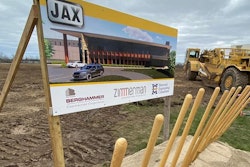
There is little doubt that the economic trends of inflation, stagflation and deflation will be with us for some time. Every expert source I read — and I follow these issues on a daily basis — supports that conclusion. Many contractors may not be accustomed to this economic climate, especially to when it comes to bidding and completing work that produces positive cash flow.
If you recall, I constantly harp on two principles, both of which are applicable to any business. And they are:
1. Cash is king.
2. Every dollar of sales requires additional capital.
I suggest you make a copy of these two tenets — a large copy — and put it on your desk where you will see it every day.
When I mention “cash is king,” I mean keeping a positive cash balance to cover your cash needs throughout the year, regardless of seasonal peaks and dips. This is more important than ever if you consider current risks associated with incoming costs. To remain successful, you should be producing a daily cash report with a recap of what you deposited and what you spent. This means producing reports to cover account receivables due, as well as a payable report noting when bills are owed and a daily process to follow up with these variables, so you can be certain where you stand from a cash position.
In previous articles, I’ve mentioned capital requirements, and in this environment, it’s as important as ever. The normal timing of business revenues and business expenses is one where bills are due and paid before receivables are collected, thus creating a gap, which in turn eats up your cash, which in turn creates demand for additional capital in the form of bank debt or a personal capital infusion. There are examples out there where a company acquires a significant increase in new profitable business, only to go bankrupt because they could not fund the additional capital to run the business.
So, at the end of each week when you review your current cash position and your projected cash position for next week, you will find that your changes in cash result from current work being completed according to plan, or not being completed according to plan. On the other hand, the level of work may be producing demands for cash you currently cannot cover. In other words, generating a profit does not guarantee positive cash flow.
That brings us to pricing our products and services when most financial metrics are up in the air. Pricing a job today is tough. And with input prices being what they are, you can:
- Option 1. Bid a job knowing you are going to eat some inflated costs, hoping conditions change sooner rather than later.
- Option 2. Bid a job using current costs, as well as any further price increases that may come about.
Neither choice is good for you or your business. With Option 1, you lose money and could weaken your cash position. Option two may cost you a lot of work, since there is always someone out there who will produce a bid without being fully aware of the marketplace. Option 2 will also deplete cash, because fixed costs need to be paid.
Option 3 is somewhere in the middle, where you reduce overhead and fixed costs, while at the same time compress your billing process to speed up collections. Improving worksite efficiency would also be part of this process. You may wish to review what work you are performing to ensure you are doing what you do best and give the other work to those more able to get the work done more effectively.
It is no secret that the construction world is taking steps to reduce the cost and time it takes complete a contract. Just review the new systems available to you to achieve this result. Finding a way to achieve this goal would allow you to use Option 1, because reduced costs can offset most cost increases you are experiencing.
If you are comfortable with your ability to manage cash, you can price your work for a profitable outcome and take the work you can get using reasonable contract terms to adjust pricing as agreed to between the customer and contractor.
If you are in a tight cash position already, and have tapped out bank resources, you really cannot eat cost increases. If you can reduce internal costs and better manage worksites to offset price increases, you may break-even.
One area all parties can review is equipment cost, which is now in the 30% range of total job costs. This cost was once in the 17% range, so it’s important to make sure your owned equipment is adding to your bottom line.
The game plan for the balance of this year is as follows:
- Know your cash position.
- Do not over invest in inventory unless you are 100% sure you can afford it.
- Know what your field personnel are doing.
- Speed up the billing process and make sure it is 100% correct.
- Invest in the systems to help streamline the process.
- Do more with less; find a way to do it.
- Manage based on your cash position.
- Do what you can do and nothing more.
- Do what you do best.



















